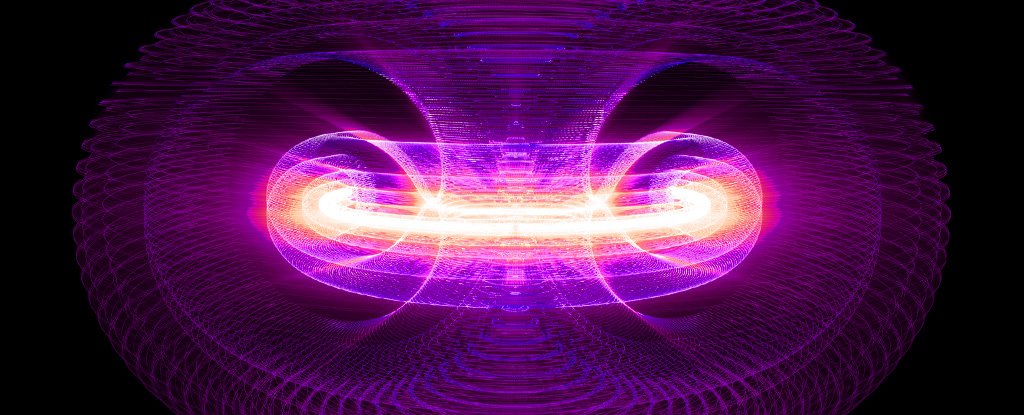
Nuclear fusion describes the physics of two or more atomic nuclei that fuse to create larger elements, the kind of process that occurs in our own Sun.
The reason it is an exciting prospect in energy production is because such an atomic fusion can release large amounts of energy. If we can harness this release of energy, humanity could have access to an abundant and inexhaustible source of largely sustainable power.
At the moment, this achievement is still a long way off, but researchers around the world are constantly advancing in the field, providing incremental improvements that are slowly bringing us closer to that goal.
How does nuclear fusion work?
Atoms grow as protons accumulate in larger and larger groups, bound by strong nuclear force. This attraction arises from the interactions between its trios of constituent particles, called quarks.
Thanks to the Coulomb force, the force of attraction or repulsion between the particles due to their electric charge, protons tend to keep a good distance from each other, far too far away because the nuclear force is agafi.
Neutrons, on the other hand, have no charge, so they are not repelled, allowing them to move relatively close to other nuclear particles with little effort. Thanks to subtle differences in a property called spin, neutrons and protons joined together can stick together to form a simple atomic nucleus.
In theory, a proton born with a neutron can bind to another association of protons and neutrons, and neutrons act as a kind of mediator. But getting several protons to dock close enough for the strong force to take hold is not an easy thing to do. Even relatively simple fusions between two deuterium atoms (hydrogen composed of a proton and a neutron) to form a helium-3 atom require the kind of pressure found in the nuclei of objects like our Sun.
For even larger elements to emerge, such as those the size of carbon, these pressure furnaces would have to withstand temperatures of at least 100 million degrees Kelvin, six times hotter than the Sun’s core.
The fusion of nuclei into even heavier elements, on a gold and uranium scale, requires a degree of cosmic power. Think about the type of forces found in colliding neutron stars or certain supernovae.
How does nuclear fusion produce energy?
The production of fusion energy depends on the differences in the amount of energy needed to hold the nuclear particles together.
If you take an alpha particle (a pair of protons and a pair of clustered neutrons) and weigh it, you will get a mass of 4.00153 units. However, weigh each atom individually and the total sum would be 4.03188 units.
Following the equation “energy = mass x square of the speed of light” (yes, this is E = mc2), the difference in mass is also a difference in energy. Together, the collection of particles has less energy than when they are separated; therefore, when they fuse, this excess energy is released into the world.
Forged deep in the Sun, this energy is slowly directed to the surface, where it is emitted in waves such as electromagnetic radiation or sunlight.
Here on Earth, physicists and engineers have been developing various devices that could help us capture and use the energy released from nuclear fusion. When they are successful, you will know for sure.
Data brokers determine that all counters are correct and relevant at the time of publication. Text and images can be modified, deleted, or added as an editorial decision to keep the information up to date.